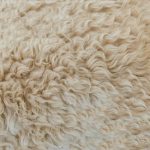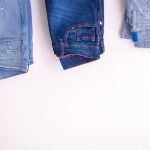As you consider using French terry fabric for your next project, you're likely thinking about the costs involved. You're not alone – the cost of French terry can be a significant factor in your decision-making process. But what exactly goes into the overall cost of using this fabric? It's not just the initial fabric cost, which can vary widely depending on the type of cotton and weave. You'll also need to factor in labor costs, shipping expenses, and overhead costs. But how do these costs add up, and what can you expect to pay in the long run?
Table of Contents
Initial Fabric Cost Considerations
When purchasing French terry fabric, you'll want to consider the initial cost per yard, as it can vary significantly depending on factors like the type of cotton used, the weight of the fabric, and the specific weave.
The type of cotton used can greatly impact the cost, with Egyptian cotton being one of the most expensive options. The weight of the fabric is also a key factor, as heavier fabrics typically cost more than lighter ones.
You'll also want to consider the specific weave of the fabric, as this can affect the cost. For example, a fabric with a dense weave may be more expensive than one with a looser weave. Additionally, the color and finish of the fabric can also impact the cost, with solid colors and special finishes like brushed or peached often being more expensive.
It's essential to research and compare prices from different suppliers to find the best value for your money. Consider your specific needs and priorities, such as quality, durability, and aesthetic, when making your decision.
Labor Costs and Efficiency
As you've considered the initial cost of French terry fabric, it's now time to factor in labor costs and efficiency, which can significantly impact your overall expenses and productivity. Labor costs can vary greatly depending on the complexity of your product, the skill level of your workforce, and the production volume.
| Production Volume | Labor Hours per Unit | Total Labor Cost per Unit |
|---|---|---|
| Low (100 units) | 2 hours | $15 |
| Medium (500 units) | 1.5 hours | $12 |
| High (1000 units) | 1 hour | $8 |
| Very High (5000 units) | 0.5 hours | $4 |
| Mass Production (10000 units) | 0.25 hours | $2 |
As shown in the table, increasing production volume can lead to significant reductions in labor hours and costs per unit. This is because fixed labor costs, such as training and equipment, are spread out over a larger number of units. Additionally, higher production volumes often allow for more efficient workflows and process improvements, further reducing labor costs. By understanding the relationship between labor costs and production volume, you can optimize your production process to achieve maximum efficiency and minimize expenses.
Shipping and Logistics Expenses
Shipping and logistics expenses can eat into your profit margins if you don't carefully plan and manage the transportation of your French terry products from the factory to your customers.
You'll need to consider the cost of shipping, which varies depending on the weight, size, and destination of your products. If you're shipping internationally, you'll also need to factor in customs fees, duties, and taxes.
To minimize shipping and logistics expenses, you should research and compare rates from different shipping carriers to find the best deals. You may also want to consider using a freight forwarder or logistics company to help manage the shipping process and negotiate rates on your behalf.
Additionally, you can optimize your packaging to reduce weight and size, which can help lower shipping costs. By carefully planning and managing your shipping and logistics, you can reduce expenses and keep your profit margins intact.
Regularly reviewing and adjusting your shipping strategy can also help you stay competitive in the market.
Overhead Costs and Profit Margins
Now that you've optimized your shipping and logistics expenses, it's time to examine another area that can significantly impact your bottom line: overhead costs and profit margins.
As a business owner, you need to consider the overhead costs associated with using French Terry, such as rent, utilities, and equipment expenses. These costs can add up quickly, and it's essential to factor them into your pricing strategy to ensure you're making a profit.
When calculating your overhead costs, don't forget to include costs like employee salaries, benefits, and training. You should also consider the cost of maintaining and upgrading your equipment, as well as any marketing and advertising expenses.
Once you have a clear picture of your overhead costs, you can start thinking about your profit margins. How much do you want to make on each unit of French Terry? What price point will you need to charge to achieve that margin?
Long-Term Maintenance and Replacement
You'll need to factor in the long-term maintenance and replacement costs of your equipment and facilities to ensure you're not caught off guard by unexpected expenses down the line.
French terry production requires specialized machinery, such as knitting machines and dyeing equipment, which can be prone to wear and tear. You'll need to budget for regular maintenance, repairs, and eventual replacements to prevent downtime and keep your production running smoothly.
Additionally, you'll need to consider the lifespan of your facilities, including the building, utilities, and other infrastructure.
French terry production requires a controlled environment to ensure quality, so you'll need to invest in HVAC systems, lighting, and other equipment to maintain a stable temperature and humidity level.
You'll also need to factor in the cost of replacing these systems when they reach the end of their lifespan.
Frequently Asked Questions
Is French Terry Suitable for Activewear and Outdoor Clothing?
You're considering French terry for activewear and outdoor clothing, which is a great choice. French terry's softness, breathability, and moisture-wicking properties make it perfect for athletic wear, hiking clothes, and outdoor gear that requires comfort and durability.
Can French Terry Be Blended With Other Fabric Types?
You can blend French Terry with other fabric types, like cotton, polyester, or spandex, to enhance its performance, durability, and comfort. You'll often see it paired with cotton for a softer, more breathable fabric.
How Does French Terry Compare to Fleece in Terms of Cost?
You're probably wondering how French terry stacks up against fleece in terms of cost. Generally, French terry is more expensive than fleece due to its denser weave and softer texture, but prices vary depending on quality.
Are There Any Eco-Friendly French Terry Fabric Options Available?
You're likely looking for eco-friendly French terry options. Fortunately, many suppliers now offer sustainable French terry fabrics made from organic cotton, recycled materials, or Tencel. You can also opt for low-impact dyes or natural dyeing methods.
Can French Terry Be Used for Home Decor and Upholstery Projects?
You can definitely use French terry for home decor and upholstery projects, it's a great choice for DIY enthusiasts. You'll love its soft, absorbent, and durable qualities, perfect for making plush throw blankets, pillow covers, or even upholstering a statement chair.
- How Does Ring Spun Cotton Affect Garment Fit and Shape Retention? - August 13, 2024
- What Are the Challenges in Producing Ring Spun Cotton? - August 13, 2024
- Is Ring Spun Cotton Suitable for Plus-Size Clothing? - August 13, 2024







